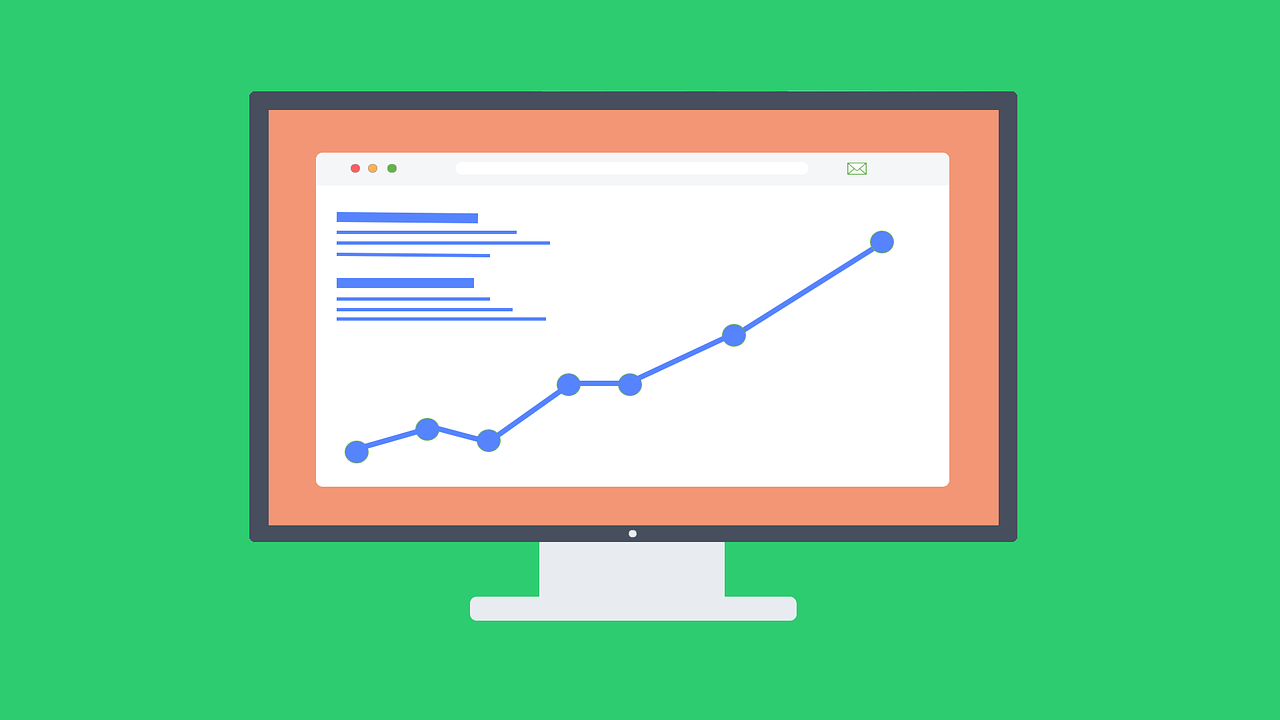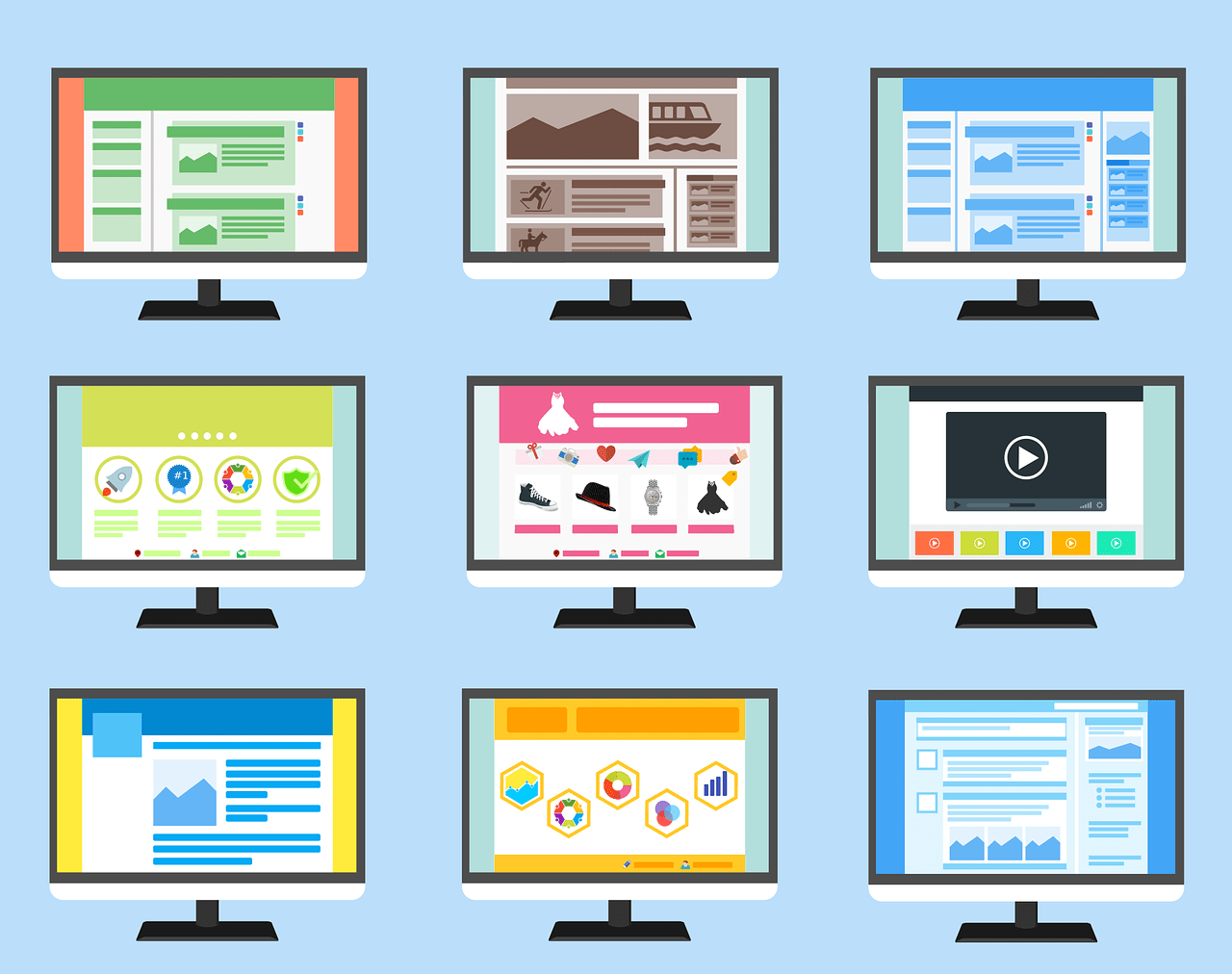What every company needs in 2019 is an excellent website. Your online site is your online business card – it tells customers everything about you, at a simple glance, and you want that first impression to be excellent. Creating a space that people want to visit and spend time on is no easy feat, but there are certain ways you can improve your existing site in order to increase traffic and engagement. Here are 9 things to do to improve your website.
#1: Start with a vision
Before you can start working on anything, you need to know what, exactly, is your ideal end result. What is your vision? What do you want your website to look like? What should your design achieve? What impression do you want to leave on your visitors?
You should have some ideas on design:
- What colors you want to use (it’s not recommended to go for too many – 2 or 3 is enough to establish a pleasant theme)
- What layout you want
- How many sections the website will have
- How much text you want to include
- How many images, and in what areas
How is this going to help? If you start out with a clear plan for website design, you are going to have a much easier time working towards it. Vision boards can help a lot, or even creating a mock-up of what you want your final version to look like.
#2: Identify what’s not working with your current website
Take a look at the website you have right now – analyze each aspect closely and try to figure out what it is that you’re dissatisfied with. Are there any particular areas that you feel are problematic? Is it too busy? Too bland? Not interesting enough? Difficult to navigate? Does it not help retain customers? Think about everything that can be right (and wrong!) with a website and then check your website against the list.
It can also be very helpful to compare your current website to the vision we talked about earlier. What are the differences? In what ways is your ideal website better than your current one?
How is this going to help? If you can objectively and successfully assess your current website and identity strong points and weak points, it’s going to help you when designing the new website. You’re going to use the knowledge you already have and not repeat the same mistakes.

#3: Don’t overcrowd your space/let the page breathe
Many companies make the mistake of stuffing as much as they can on one page – blocks of text, different fonts, different sized headings, images, buttons, links, and etc. It’s a lot. Not only does it look cluttered, but it’s also very difficult and tiring to read and process. You don’t want people clicking away because your site is just too much.
The trend nowadays is for sleek, modern designs that allow the content to speak for itself. Your content should be the focus, so you should let the page breathe by allowing enough space between different blog posts. You’d be surprised how much it can help to have a blank space.
Featuring a few (maybe 3 to 5) blog posts at a time on one page allows each of them to shine and doesn’t overstimulate the reader by giving them too much stuff to look at.
How is this going to help? The more pleasant your website is to read and look at, the more readers will hang out there. Overcrowding pages may be tempting (more is always better, right?), but pulling it back a tad puts the attention back on your content and makes it easier to read.
#4: Zero-in on images
You already know that the visual aspect is really important, but have you considered your choice of images? Are they inspiring enough? What do they say to your readers? It’s true that your written content needs to be spiffy, but you can’t underestimate the visual component and how much images can draw a person in.
Where most websites go wrong is that they use a lot of very obvious stock imagery; and it’s not that you can’t use stock images (not everyone can source and pay for their own high-quality images), but that they should be well-chosen. Typing in a generic keyword and using the first image that pops up doesn’t cut it anymore. Especially when you couple a stiff, stock image with a cheap font, it ruins the whole vibe of your site.
How is this going to help? 15 seconds is all the time the average reader spends on a website, according to Time, so you need all the help you can get to get their attention. Images are a big draw and can catch someone’s attention for long enough that they’ll actually read your blog post, instead of scrolling through it and then clicking away.
#5: Create unique content
Content is a really important part of your website and its overall success – you’ve certainly heard before that content is king. That means that it needs to be high-quality, interesting, regularly posted, it should fit seamlessly within the theme and vibe of your website, and very importantly – it should be completely unique.
Sure, everything has already been done before, but it doesn’t mean you can’t put your own spin on it. Even if a different site has already written on a topic, the way you approach it makes all the difference. Scope out the competition and see what they’re all about, and then strive to make unique points on the same topic, or present it from a different angle. That will make you stand out, instead of blending in.
How is this going to help? Unique, high-quality content helps you rank higher, and brings in more visitors and potential customers to your website. As long as users know that they can find regular, unique, and interesting content on your page, they will keep coming back. If they’re finding stale content on your website that’s similar to your competitors, that’s not going to retain their attention and won’t give your website the unique vibe you’re looking for.

#6: Take full advantage of SEO
If you’ve been neglecting SEO (Search Engine Optimization), that’s a mistake, but one that can certainly be rectified. SEO is the tool that helps bring your website forward and boosts its ranking so that you’re not buried on page 14 on Google and are instead amongst the first few search results on the 1st page.
In the past, SEO may have been associated with an irritating overstuffing of keywords, to the point where a blog was unreadable. Nowadays, SEO is way more subtle and is done with more precision and finesse. It’s taking a “quality over quantity” approach, while in the past it was the exact opposite. Here are some quick tips:
- Start with keyword research
- Study your target audience
- Take advantage of Google’s tools, like Search Console or Analytics
- Post content regularly
- Use keywords sparingly
- Link internally and externally
- Optimize your images
- Optimize titles
How is this going to help? CognitiveSeo recently conducted a study on 40 blog posts and discovered that the use of SEO increased visibility by 70% – that number alone should tell you everything you need to know about why you need it.
#7: Make your content useful and valuable for your reader
The difference between poor websites and excellent ones is the quality of the content. That goes for how well it’s written, but also how useful it is to the readers. Too often, websites are just a home for long, empty ramblings that don’t really…say anything. It’s not enough to throw around hot buzzwords; ideally, the content you create has actual value for the reader.
By value, we mean that when one finishes reading your article, they should be able to take away something they didn’t already know, useful advice, or some practical steps and tips. What works wonderfully are tutorials and how-tos, industry secrets, tips and tricks gained from experience, and anything else that you can share that has value to you and can also hold value for other people who are eager to learn from you.
How is this going to help? Once you’ve established yourself as a destination for quality content, you gain a certain authority that is very valuable. You aren’t just one of the hundreds of random websites who only write content to promote themselves; you’re an actual expert who is able to help people. And that’s worth a lot, in this industry.
#8: Make sure it works for mobile users
Surprisingly enough, this is something a lot of companies overlook, but that should be taken into consideration when you’re creating that vision we talked about in the beginning. Who is your target audience? And where are they likely to visit your site and/or view your content? That’s right – scrolling on their phone. In fact, SimilarWeb states that 58% of all website hits came from mobile devices in 2018, and it is projected that the number will continue to rise.
When you’re putting your website together, you’ve got to tailor it to your target audience and prioritize their needs and desires. In this day and age, that means catering to mobile users. Too many websites are stuck in the past, with desktop-only interfaces that are annoying or even impossible to navigate on a phone.
How is this going to help? You want to make your site has a responsive web design and easy to navigate, and your audience will keep coming back because you make it easy. How many people are going to use their desktop specially to go to your website? On their phones, they can access the site anywhere, at any time – on the go, in a waiting room, in traffic, etc.
![]()
#9: Include social media
Love it or hate it, social media is here to stay, and it’s a huge part of how we consume our current media. That means that while you don’t necessarily have to create your content and your identity around social media, you can’t escape it, either.
At the very least, you should have buttons leading your readers to your social media pages. They should be easy to find on your home page, but also on every page where you can share content. You want to give your readers the option to share your content with their social network, in order to increase your traffic and engagement levels.
How is this going to help? The more places your readers can find you, the better. That’s going to help grow traffic to your website and other pages. Having a social media presence makes it easier for your audience to find you and easier to share with others, thus ensuring that your company receives more exposure.
Final Thoughts
Your website is more important than you think – it’s the first thing clients see, so you’ve got to make it spiffy. If you’re dissatisfied with your current website and feel like it’s not doing as well as it should be, there are things you can do to improve it. From aspects of web design to content, the success of your site maybe just a small change away. Whether it’s a change of layout, some more interesting images, or a better implementation of SEO, these steps can bring you a brand-new site in 2019.






